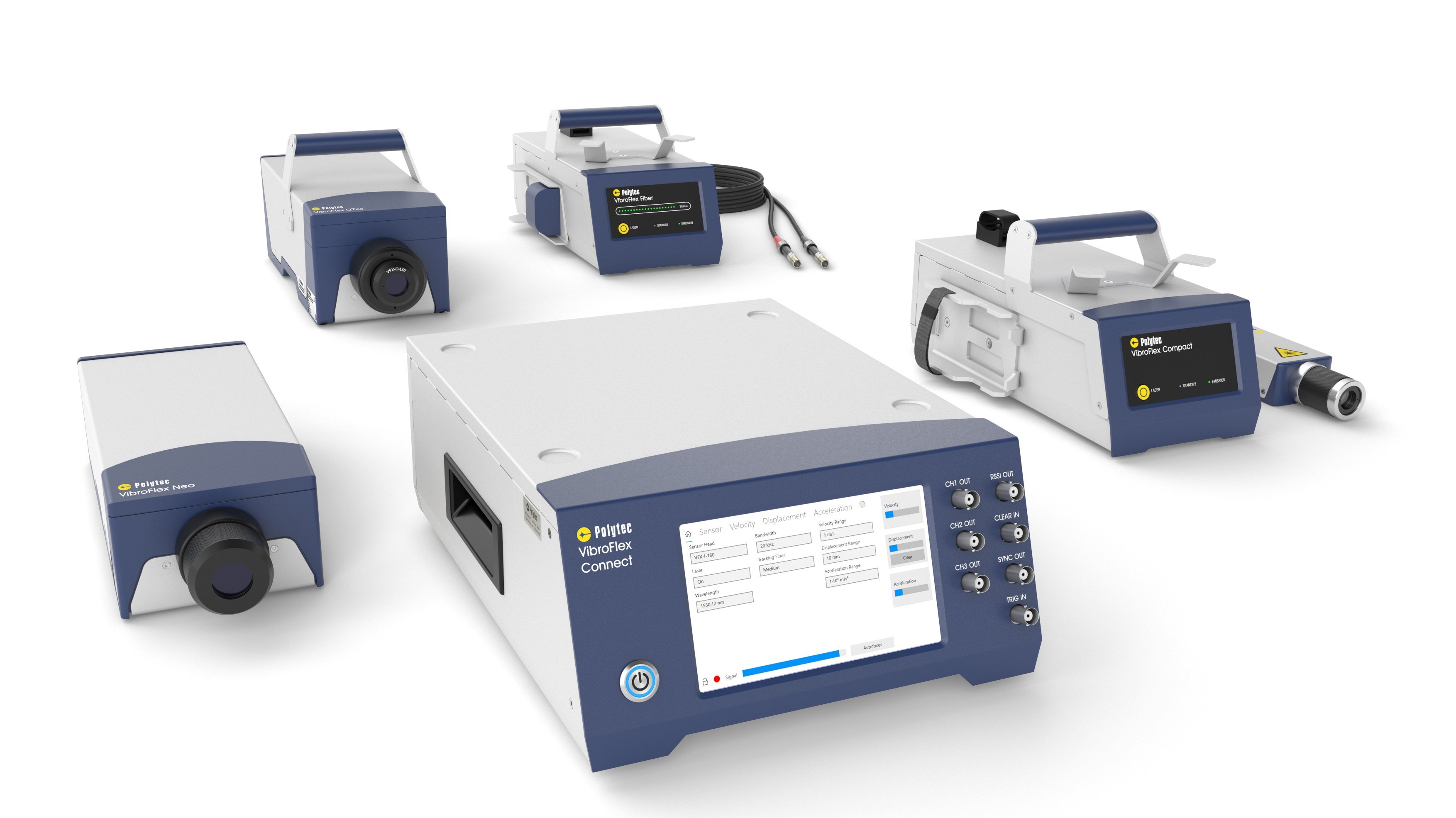While the laser light is reflected back to the photodetector without loss on optically smooth surfaces, measurement surfaces are usually optically rough in practice, which can lead to broadband noise and unwanted signal dropouts. This is precisely where the patented QTec® technology from Polytec comes in, as it significantly improves the signal-to-noise ratio for vibration measurements (Figure). A multi-detector concept, in which backscattered signals reach multiple photodetectors, is the key to this. It means that surface irregularities hardly play a role anymore because – to put it simply – less light is lost during reflection. High-speed electronics in the sensor head measure the detector signals in real time; the user is provided with a common measurement signal, making the new sensor heads compatible with the current single-channel vibrometer decoders.
Reliable data and shorter measurement time
Higher optical sensitivity is the basis for better data quality and higher productivity: the new multi-path interferometry helps to obtain reliable measurement data, even in demanding measurement tasks, e.g. on moving, distant or rotating test specimens, and it also works on poorly reflecting surfaces such as human skin. In addition, measurements become faster. Up to now, a poor signal-to-noise ratio was partially compensated for by averaging multiple measurements. The new approach means that four to ten times fewer averages are needed, depending on the applications. This significantly reduces the measurement time. Furthermore, low-noise vibration measurements can even be performed in applications where averaging is not possible because of the time factor, e.g. when the distance traveled by an object is to be determined, or while measuring the pulse in humans.
The new QTec® technology is available as a sensor head for the existing VibroFlex system (optionally with the VibSoft-VL software for digital acquisition and evaluation of the data) and as a scanning vibrometer in a compact version or as a 3D version for the acquisition of all vibrational directions. The scanning vibrometers are always supplied as a turnkey system with integrated data acquisition and 3D visualization of the deflection shapes.
Figure: The patented QTec® technology, which significantly improves the signal-to-noise level in vibration measurements, is optionally available as a sensor head for the existing VibroFlex system (a) and as a scanning vibrometer (b). (Copyright: Polytec)
Company text box: About Polytec
As a laser technology pioneer, Polytec has offered optical metrology solutions for research and industry since 1967. The high-tech company is based in Waldbronn near Karlsruhe, Germany, and after trading as a distributor in its early years, made a name for itself as a developer of in-house, laser-based measuring instruments in the 1970s. It is currently the global market leader in the field of non-contact vibration measuring technology with laser vibrometers. Systems for length and velocity measurement, surface characterization, analytics and process automation also form part of the wide range of in-house developments. The distribution of image processing components and optical systems is another of Polytec's core areas of expertise.
You can find further information on this topic at: www.polytec.com/int/vibrometry/technology/qtec
Use free of charge; please send any readers’ queries directly to Polytec
Text (plt066) and pictures on the Internet: http://pool.rbsonline.de
Characters (plt066): approx. 2,500
Characters in “About Polytec” text box: approx. 750
